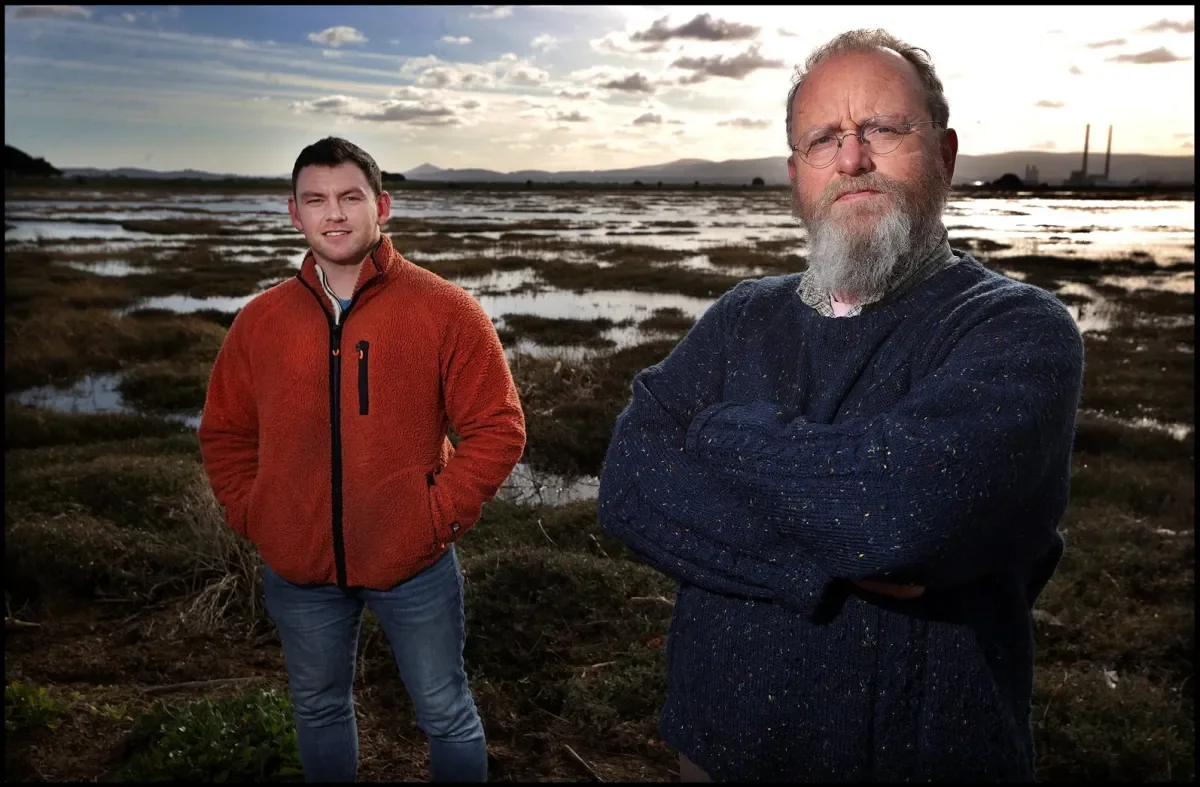

Bull island a ‘Blue Carbon’ ecosystem that can help Ireland meet its climate targets
One example of such is displayed at Bull Island, Dublin Bay, a coastal sand spit and UNESCO biosphere which emerged from the dredging of Dublin port in the nineteenth century. The island’s landside coastline boasts fine examples of saltmarsh and intertidal mudflats which are acting as a ‘carbon sink’, and hubs of biodiversity.
Dr Anthony Grey, a post-doctoral researcher in geochemistry, and Dr Brian Kelleher - both School of Chemical Sciences - are studying the ecosystem of Bull Island, which is capturing and storing carbon, greenhouse gases, from the atmosphere.
“As well as that benefit, we can see that harmful materials such as heavy metals, micro-plastics, organic pollutants are being neutralised around the island, while still displaying the ability to support biodiversity, which is in decline in many places around Ireland,” says Dr Grey.
“Unfortunately, some of those coastal habitats are at risk from erosion, pollution and human interference,” says Dr Grey.
The use of blue carbon habitats as ‘carbon sinks’ could help Ireland to meet its net-zero carbon emissions target by 2050. More widely, it offers a natural solution for a global problem where some 40 billion metric tonnes of carbon – and growing – enters the atmosphere each year.
“The monitoring, protection and restoration of habitats, similar to those at Bull Island could be a long-term solution to our greenhouse gas problems,” says Dr Kelleher who is Chair of the degree in Environmental Science and Technology at DCU.
“This is a natural solution to the greenhouse gas problem and more workable than many of the engineering solutions that are out there, such as underground storage, which would only deal with a tiny percentage of the carbon going into the atmosphere each year,” says Dr Kelleher.
“We are no sure yet how much carbon could be absorbed by Bull Island and similar islands around the coast, but the potential is there for this approach to have a big impact,” says Dr Kelleher.
Engineers understand what led to the creation of Bull Island during the 19th century dredging of Dublin port, which had silting issues. This knowledge means these processes could be replicated around the coast to promote sediment capture in areas threatened by coastal erosion and sea level rises.
“The results of our studies highlight the ability of ‘blue carbon’ sediments to immobilise carbon and describe a connection between bacterial polyhydroxyalkanoate (PHA) accumulation, microbial community composition and membrane lipid adaptation, in polluted carbon-rich sediments at Bull Island,” said Dr Grey.
“Sediment in theory could be diverted to the areas of most need,” says Dr Kelleher. “Of course, there may be impacts on ecosystems that we can’t envisage in advance, but that risk should be balanced against the likely benefits to biodiversity, which we have seen at Bull Island.”
Capture
Carbon enters the ecosystem around Bull Island from land and rivers, from within the habitat, via plants and algae, and by sea. The particles and molecules of carbon are captured and filtered in ways that scientists don’t yet fully understand, in the shallow waters around Ireland’s coastal wetlands and marshes.
“The salt loving plants in these waters are good at taking carbon dioxide in from the atmosphere and turning it into other forms of carbon that are more likely to remain stored in the sediments,” says Dr Kelleher.
“The carbon accumulates in the sediments and is then locked into place by minerals and clays which act to prevent the carbon from combining again with oxygen and re-entering the atmosphere as carbon dioxide,” says Dr Kelleher.
Bull Island has high levels of inorganic pollutants like lead, zinc, and excessive nutrients which come from sewage and organic pollutants such as polyaromatic hydrocarbons (PAHs) which result from the burning of fossil fuels.
These pollutions are immobilised by the plant roots and impede the action of microbes that normally break down carbon – keeping carbon gas locked in the sediments.
“As well as removing atmospheric carbon, the muddy offshore seabed sediments along the east coast of Ireland have high capacity for carbon storage exported from land and coastal zones,” says Dr Grey.
“There is a drive at national level from research groups and institutes to enhance our knowledge of the functioning of blue carbon habitats so we can leverage strategies in the future to optimise carbon capture and, importantly, the long-term storage,” says Dr Grey.
In 2021, the Marine Institute and EPA co-funded two major research (Blue C and QUEST) projects to study how coastal and marine habitats can reduce climate change. The research creates an exciting opportunity to use an evidence-based approach to inform policy makers on the necessity of protecting our marine ecosystems.
“We believe that Bull Island and its environs is an example of a workable, natural model to tackle the seemingly intractable twin problems of greenhouse gas emissions and man-made pollutants,” says Dr Grey.
That said, we must strive to reduce our harmful activities while we can, and not push our ecosystem balances beyond restoration,” Dr Grey added.
The research was made possible with funding from the Geological Survey of Ireland, Science Foundation Ireland and the Marine Institute.
